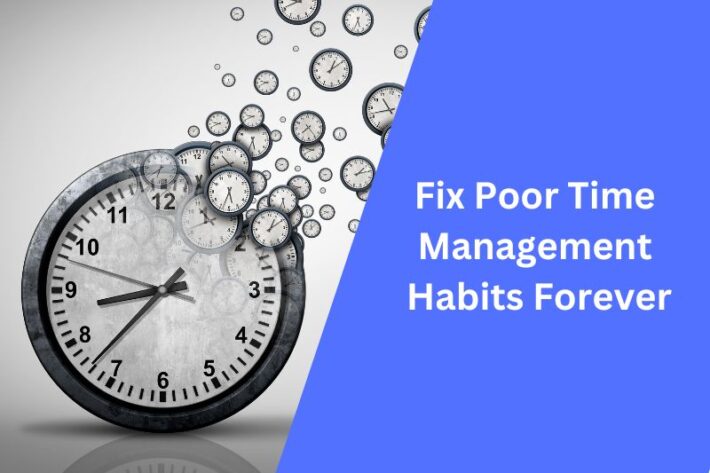Overcome Schedule Conflicts To Boost Productivity

Scheduling conflicts are no joke, especially when managing large projects with tight deadlines. It can be extremely stressful to deal with a lack of resources and overlapping commitments, and yet this seems to have taken over your life.
What you need is to get out of this tight spot. Find a way to solve the problem of schedule conflicts and boost the productivity of your whole team.
Congratulations! They say the first step to overcoming a problem is to acknowledge you have one.
In this article, we take a light-hearted look at a serious issue, give you the latest best practices for dealing with your project management problem, and introduce cutting edge AI technology that will resolve scheduling conflicts.
Wanna be done with this schedule conflict nonsense by the end of the day? Well, come on then, what are you waiting for? Let’s get on with it.
Do you want to be the first to adopt AI-driven calendar scheduling? It’s proactive, intuitive, and great at spotting problems long before you even know about them. Try the innovative app, Timewise Calendar for free.
Types of work schedule conflicts
Before getting into the best practices, it may be beneficial to identify the scheduling conflicts that you are struggling with the most. A scheduling conflict occurs primarily because there are two or more resources, needs, or deadlines that are competing with one another.
Resource conflicts
When multiple tasks require the same resources (usually a key team member) at the same time. A typical scenario is when a staff member holding a specialized skill is booked for two urgent meetings at the same time. Both clients are on a tight schedule and now you have to resolve the issue. If you’ve been in this sticky situation, you just got a sinking feeling in the pit of your stomach, right?
Time conflicts
When tasks or meetings are scheduled to occur over the same project timeline. Think of a software development team with overlapping deadlines for two major product launches. Have mercy! This is when project managers feel more like jugglers, working out which product launch gets prioritized.
Priority conflicts

© Prostock Studio via Canva
Scheduling conflicts occur when tasks and deadlines have differing levels of importance. High-priority commitments are delayed because team members are focusing on low-priority tasks. Don’t you just love human nature? Always tackling the easy stuff. Have you ever had a scenario where a critical client presentation is due, but your creative team is focusing all their energies on an internal newsletter? Then you know what we’re saying.
Dependency conflicts
This is one that everyone hates. One task is dependent on the completion of another task, and everything is delayed while the whole team waits impatiently for things to move along. In a multi-phase project with a software development team, a testing team, and a deployment team dependent on one another, things can get really tricky.
Let’s say the development team encounters a bug in the software that needs urgent attention. The testing team is on standby while this is resolved, and deployment is further delayed. Now, you have teams idle, leading to inefficiencies and underutilization of time.
Ok, now that we’ve thoroughly stressed everyone because these examples are all too relatable, it’s time to bring you some relief by helping you solve the problem.
Best practices for avoiding scheduling conflicts
Remote teams based on every continent have become the norm. In other scenarios, team members are scattered across towns and only see each other online. These are the realities of the global working world. Businesses everywhere have had to adopt better ways of working, and it’s from these improved ways of working that we bring you a list of best practices.
Prioritization techniques
You can minimize scheduling conflicts with prioritization techniques. It involves identifying which tasks, deadlines, and projects are the most critical to achieving your goals and addressing them first. Two of the best known techniques are the Eisenhower Matrix and the ABC method.
Eisenhower Matrix
Also known as the Eisenhower Box or the urgent-important matrix, this tool helps you divide tasks into four categories: Do, Schedule, Delegate, and Delete.

ABC Method
The ABC Method helps you avoid schedule conflicts when you assign a letter to tasks based on their priority level: A for high-priority tasks that are critical to a project’s success, B for tasks with longer deadlines, and C for low-priority tasks that can be done when time permits.
Resource allocation
Optimizing resource allocation to avoid scheduling conflicts is probably the trickiest part of keeping multiple projects on track. People, equipment, and time are always subject to unexpected events and easily disrupt a project schedule. Here’s what you can do to resolve conflicts.
Use resource scheduling tools
Use scheduling software like Timewise Calendar, Asana, and ClickUp to visualize and manage resources in one place. These tools help to proactively identify and handle schedule conflicts.
Create buffer time
Unforeseen circumstances will always be the enemy of a tight schedule. This is why you need to anticipate this, and create the space for things to crop up at the last minute. This will prevent you from overloading resources, and stop your team members from being stressed out by tight deadlines.
Cross-training

© Getty Images via Canva
It’s not cross-fit, although you could probably call it that as well. With this strategy, you enlarge your team’s capacity by giving team members multiple skills and thereby increasing their flexibility. You can allocate them to other projects, a team meeting, or double bookings without stretching the resources of one team member. Work-life balance might just become more than a concept with this strategy.
Improve communication
If we only had a dollar for every miscommunication occurring somewhere in the world. Some days, it’s hard to understand how human beings ever get anything done with the amount of misfires, communication gaffes, and double entendres flying around. So, if you can get your team’s communication on track, you’ll be ahead of the pack. Here’s how.
Help the scheduling process with regular check-ins
Schedule regular check-ins with your team. Even if you have a remote team, you can all get together online for five minutes at the start of every workday to ensure everything is still on track. This will help you to catch problems before they become scheduling nightmares.
Clear documentation
Put someone in charge of maintaining clear, up-to-date project documentation. Project deadlines should be revised daily and weekly. All documents should be accessible to team members on a shared drive or on your project management software. Other project managers, whose work is dependent on your progress, should also have access to these documents.
Transparent communication
Have you ever had an important meeting only to find out a vital team member is on leave, sick, or allocated to multiple commitments?
Fostering a culture of honest, upfront, and urgent communication about your team’s movements is critical for project management success. When teams don’t have clear processes for communicating their movements or logging work schedules, it can affect employee morale. Let’s face it: When the resource manager is under pressure, everyone feels it. Wouldn’t it be better if each team member could see exactly what the others are doing and where they are?
Boost team morale with effective resource management
Flexible planning

© Getty Images via Canva
Planning on the go, or as the situation changes, is what flexible planning is all about. A sudden double booking, unavailable employees, an unavailable time slot, people working in different time zones. These are all reasons you need to be able to think on your feet.
Consider these approaches to help you be more flexible.
Agile methodology
Implement agile practices such as iterative development and regular reviews. Agile allows for continuous adjustment and adaptation, making it easier to manage changes and conflicts in the schedule. Brene Brown, a thought leader on agile practices, has put forward many thoughts and ideas about what it is to lead in the digital age. It calls for moment to moment adaption and putting people first in an age where people can seem like a second priority.
Yet, even in the digital age, all project managers are called to effectively manage this most precious resource, called people.
Scenario planning
This is when you develop a contingency plan for different scenarios impacting your project. Do this during the planning stage and you’ll save yourself a great deal of stress. If you know how to respond when there are unforeseen delays or overlapping meetings, you’ll be more responsive and confident.
Task dependencies
Map out task dependencies and critical paths to identify potential bottlenecks. Using a simple tool, like Slidegeeks, can help you visualize project timelines and parties involved.

slidegeeks.com
Tools and technologies
At last, we get to the section that we’re excited about. Sure, we’re excited about dependency mapping and all that, but this is where our conversation gets really interesting.
There are a number of great software tools that can help you manage and prevent schedule conflicts. The methodologies on which these tools are based are rooted in many of the best practices that we’ve been sharing with you, which makes them the ideal way to bring all your favorite strategies into one app.
Project Management Software
Software like Timewise Calendar, Monday.com, Asana, and ClickUp offer features for tracking tasks, deadlines, and resource allocation. They help identify conflicts and facilitate better planning.
Automated Scheduling
Automated scheduling tools can adjust schedules based on real-time information and resource availability, reducing manual adjustments and improving accuracy.
Time tracking tools
Time tracking tools allow you to monitor how much time is spent on various tasks. This provides valuable insights into where potential conflicts may arise and helps with future planning.
Want a tool that integrates all these features? Look no further than our featured software, Timewise Calendar.

Be first in line to adopt this innovative AI driven calendar scheduling, task management, and resource management software.
Timewise Calendar is set apart from older project management apps by its intuitive and proactive AI-powered capabilities.
This app has the solutions for all your scheduling problems and creates an environment where you can visualize meetings, project demands and available resources in one place.
Here’s how it works.
Dynamic Rescheduling
Automatically reschedules missed tasks and adjusts for new, unplanned events, keeping your project timelines intact. With your project timelines intact, it allows for seamless collaboration and efficient project management among remote team members. The end result is a stress-free working environment driven by a flexible and reliable schedule. Everyone can remain calm and focused, knowing that the AI productivity coach has got your back.
Resource Management
There are three main features that make resource management a breeze, even fun!
- Tracks and allocates resources effectively based on availability and project needs. This reduces the mental load of manually tracking resources, provides clarity, and reduces stress for project managers.
- Provides a clear overview of resource availability, helping teams to plan and execute projects smoothly. The result is increased confidence and anxiety reduction as the software ensures resources are properly managed and readily available.
- Allows for proactive adjustments to resource allocation, improving overall project management and success rates. This promotes a sense of control and preparedness, boosting team morale and project success.
Smart Conflict Resolution

© Getty Images via Canva
Here’s where AI-driven project management tools outshine the rest. The technology can proactively identify and resolve scheduling conflicts, and the more it learns from your recording patterns, the better it gets at this task.
By suggesting the best timing for tasks, meetings and focused creative work, it enhances the effectiveness of the whole team. It bases its suggestions on user preferences and past scheduling to achieve project success.
When you have a smooth, conflict-free schedule and everyone is doing the work they love at the best time for them, then you have a happy and satisfied team performing at its peak.
Goodbye scheduling conflicts
We’ve reached the end of our discussion on solving scheduling conflicts. From start to finish, we’ve given the very best of what’s on offer to help you address the pressing challenges that threaten to sabotage your most important projects.
Through the adoption of best practices and AI scheduling technology, you can combine the best of both worlds. When you free up the mental and emotional energy that is usually directed toward solving project management and scheduling issues, you’ll have all that energy available to push the best outcomes for your team and your clients.
It’s only a matter of time before all remote working and project management teams need to adopt some kind of technology to keep up with their competitors. Get ahead of others in your industry by taking the plunge into AI-driven scheduling technology now.
There are only two types of people in business: the leaders and the followers. Be a leader.
Launch Today
Ready to elevate your game?
Start your 14-day free trial today.
Take control of your schedule and increase your efficiency. Timewise Calendar helps you manage your tasks effortlessly, so you can focus on what matters most.

